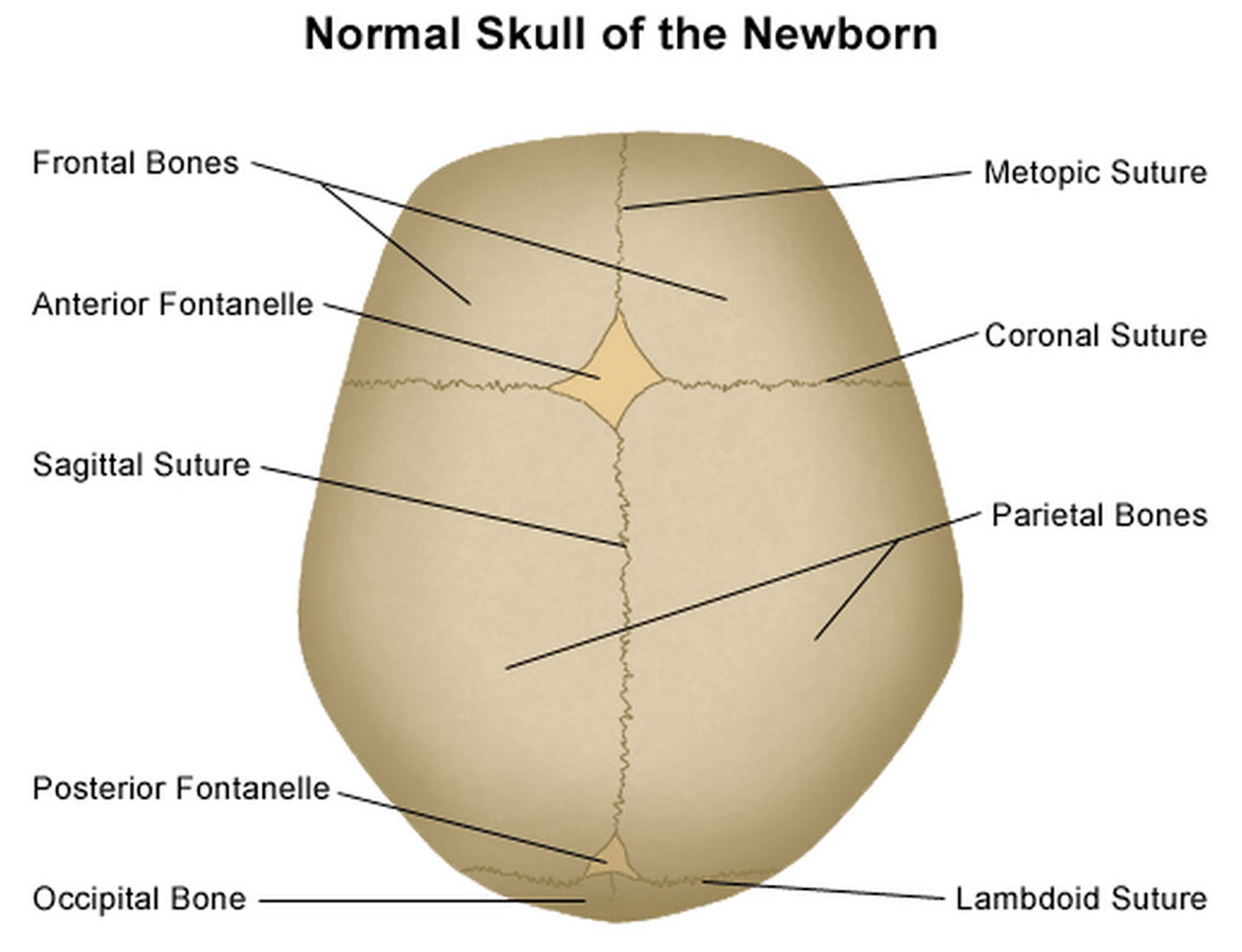Baby soft spot on the skull
Baby soft spot on the skull is also called the fontanels (fontanelles), which are the open “soft spots” between the bones of the baby’s skull. If you run your fingers gently over your newborn’s head, you may feel a couple of soft spots instead of bone. These soft spots, where your baby’s skull bones haven’t fused together, are called fontanels (fontanelles). The fontanelles are a part of normal development. However, changes in the fontanelle can sometimes indicate a health issue.
Unlike adults, babies have skull bones that are not firmly joined together. The spaces between the skull bones are important as they allow the bones to move, and even overlap, when the baby passes through the birth canal. These spaces also allow room for the baby’s brain to grow.
You may notice one such space, or fontanelle, at the front on top of the head called the anterior fontanelle and another smaller fontanelle at the back of the head called the posterior fontanelle.
Over time, the fontanelles harden and close. The fontanelle at the back of your baby’s head usually closes by the time your baby is 2 months old. The fontanelle at the top usually closes sometime between the ages of 7 months and 18 months of age (normal range is 5 to 24 months of age).
Some parents may feel anxious about touching the fontanelles. However, there is no need to worry or to avoid touching the fontanelles, as they are protected by a tough membrane or layer of tissue. The front “soft spot” is diamond-shaped. It is covered by a thick fibrous layer. Touching this area is quite safe. The purpose of the soft spot is to allow rapid growth of the brain.
The back “soft spot” is smaller and triangular-shaped. It closes between 2 and 3 months. The soft spot normally looks flat or a little sunken. It may pulsate with each beat of the heart. This is normal. The only abnormal soft spot is one that is bulging (swollen).
Changes or abnormalities in the fontanelles may provide clues about your baby’s development and health. This is why it’s normal for your baby’s doctor or nurse to examine your baby’s fontanelles during check-ups. For instance, delayed fontanelle closure or an enlarged fontanelle can be associated with a range of medical conditions.
A sunken soft spot is not a sign of illness unless the baby is dehydrated. Then it would be very depressed and the baby would not act well.
Figure 1. Normal skull of newborn
Sunken fontanelle
When you touch the fontanelle, it should feel firm with a slight inward curve. Many parents will worry about the fontanelle being ‘sunken’ (drawn in) and that this is a sign of being dehydrated (does not have enough fluid in their body). However, while a sunken fontanelle can occur when your baby is severely dehydrated there are many other signs of dehydration that happen before a fontanelle becomes sunken, such as fewer wet nappies and being less alert and responsive, and usually dehydration occurs when the baby is not feeding well or losing fluid through vomiting or diarrhea. See your doctor right away if your baby has any of these signs of dehydration.
Bulging fontanelle
Your baby’s fontanelle may bulge or look raised when they cry but return to flat or slightly curved in when your baby is not crying and is in a head-up position. This is not a cause for concern.
A bulging fontanelle that does not return to normal may be a sign of a serious condition, such as an infection or swelling in the brain. See your doctor immediately, especially if your baby has a fever or is unusually sleepy.






